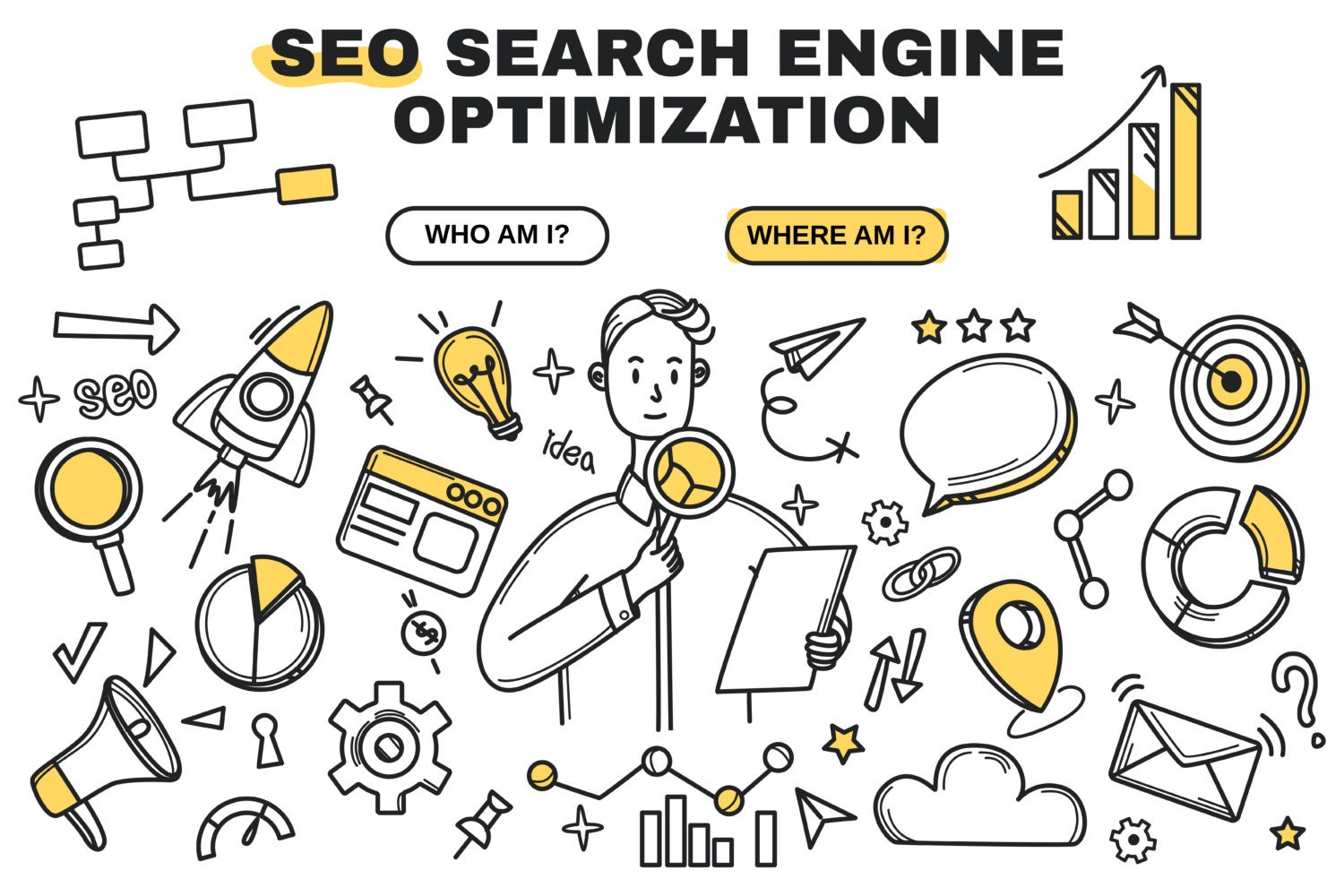Search engine optimization requires extensive internal changes to produce a noticeable effect on your website’s SERP ranking. And one of the elements that will significantly influence the success of your approach will be the UX design components implemented by the experts you collaborate with. UX is a vital part of SEO because it influences how audiences interact with your services and, hence, has a critical effect on determining website authority scores. How? For one, UX affects the visitor bounce rate, a metric Google uses to assess website content’s relevance.
Do you write relevant articles and market trendy products or services? That’s great, but if your visitors do not stick around due to the page’s UX, the search engine will penalize you, and your efforts will be in vain. Changes to the website’s UX will improve pages’ loading speed and transform your domain’s mobile usability. Two seconds of on-page delay can contribute to a 30% drop in traffic, and as more than half of online traffic comes from mobile devices, UX optimization for handheld devices will be crucial for a favorable ranking in Google Discover or Featured Snippets. A top selling point of any web design company should be the hosting included in the package and the superior loading speeds you’ll receive as a result.
High-quality UX design will positively contribute to the accessibility score of your website, boost your user engagement metrics, modify the navigation structure of your pages, and enhance your site’s authority. UX and SEO are intertwined, and the technical SEO operations performed on websites are some of the most important modifications that can increase their score in search engine result pages. UX modifications are complex, require thorough research, and must be carried out by experts. Nevertheless, when successfully implemented, they lead to spectacular results and are the key to enhanced long-term profitability.
How Can You Improve Your Website’s UX Performance?
UX is an essential part of SEO operations and is also one of the most diverse steps you can take to increase the efficiency and visibility of your website. How can you improve UX? Firstly, by modifying the elements that affect page speed. When we say UX, we primarily refer to the efficiency with which websites load. Do you want to benefit from enhanced SERP scores? In this case, the images in your articles must be compressed, your HTTP requests must be reduced, and you need to implement CDN to share the load requirements with local servers.
Secondly, it will be essential to adopt a mobile-first approach, prioritizing performance for mobile devices. 60% of online traffic comes from smartphones, a steadily increasing percentage. Google has been using a mobile-first indexing approach for several years, boosting the SERP ranking of websites with handheld device optimization. Therefore, your UX approach must consider smartphones and tablets and be compatible with AMP plugins.
To improve the speed of your website, you could implement lazy loading design schemes, and to comply with the webmaster guides, you will be required to follow the Core Web Vitals, namely the LCP, FID, and CLS metrics. You must also respect the WCAG guidelines, ensure that your CTAs are visible and that your UI design encourages user retention. Not least, your written content must be visually optimized, provide sufficient contrast between background and text, use a harmonious design language, and be accessible and easy to interpret.
What Are Some UX Design Trends Suitable for SEO?

UX trends come and go, and the same goes for UI designs. However, over the years, a few approaches have proven especially effective for SEO strategies focused on long-term growth. What are they? Firstly, 21st-century UX designs must be focused on a mobile-first approach, which encourages optimization for small screens and low-power devices. Furthermore, for an enhanced SERP score, your site must be well-optimized, benefit from browser caching, and implement progressive web apps that mimic the app-like experience that most users have become accustomed to.
In addition, it will be essential to optimize for voice searches. Are you a company looking for regional relevance? Then, the efficiency of your local SEO efforts will largely be determined by how you structure the website content. Over 40% of mobile users have used voice search in the last year to search for information about local products or services. Do you want your website to be more relevant for queries? Then, adopting a conversational tone in the written content and providing answers to questions in FAQ sections is a great idea.
Interactive elements such as polls or surveys also have a proven effect on user interactions, while a minimalist design can be an excellent visual option for increasing the website’s snappiness. Not least, you should also pay attention to the UI language of the pages. Do you want to approach a modern audience? Then, you should consider a dark theme. Dark theme websites have grown in popularity in design language philosophies, and using their design hues could positively affect user retention and profitability.
How Can UX Help with Link-Building Proposals?
Link-building strategies are an essential part of SEO. Moreover, the UX optimization of your website can be a way to attract the attention of websites relevant to your target audience, creating long-term collaborations that lead to mutual benefits. Link-building SEO packages will provide you with a comprehensive UX design language that encourages the creation of high-quality content relevant to the industry in which you operate. High-quality, readable content that respects the E-A-T guidelines is an essential part of SEO and, when combined with proper formatting, can contribute decisively to your link-building efforts.
Link-building high-quality SEO proposals will also be influenced by users’ navigation experience on your pages. Content is essential, as is the reputation of the site you are collaborating with. However, in the end, link-building is all about trust. If your site’s pages are difficult for visitors to navigate, this can lead to a reputation hit for the domain that links your materials. UX is vital to a long-term link-building strategy and can also be crucial for search engine crawlers to index your content correctly. What other components need to be considered in a link-building strategy?
For a start, your site should feature interactive elements and benefit from an untarnished reputation. A good idea is to use the reviews you receive on social media or in your Maps listings and turn them into site testimonials. Moreover, you could implement social media sharing buttons to increase the distribution of your articles. The proposal you present to potentially-collaborating websites will also be valuable. A great emphasis should be placed on your content’s objective aspects, how it answers niche queries, and the advantages it can offer external websites.
A Crucial Aspect of a Comprehensive SEO Strategy

User experience is one of the primary criteria that search engines consider when calculating your SERP score. Enhanced UX design can improve your target audience’s interactions with your services or products, enhance the usability of your pages, boost your brand reputation, and strengthen your accessibility score. Poor UX is associated with high bounce rates, loss in profitability, and long-term business failure. Ultimately, UX is related to how your target audiences interact with your products, and if their experience is clunky, the SEO strategy will eventually fail.
A well-implemented SEO strategy focusing on the UX experience will improve the loading speed of your site’s pages, prioritize the usability of your domain on mobile devices, increase the relevance of your content and make it easier to read, and eliminate graphic elements that drag down site performance. UX improvements are not simple and require the professional intervention of teams of experienced SEO specialists. However, when properly implemented, UX modifications can do wonders for your profitability and are one of the principal reasons for the positive ROI of SEO strategies.












